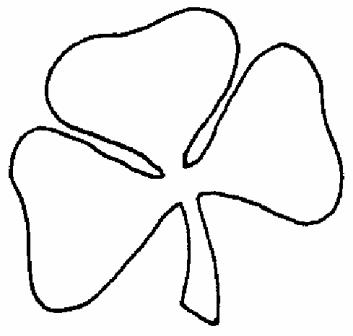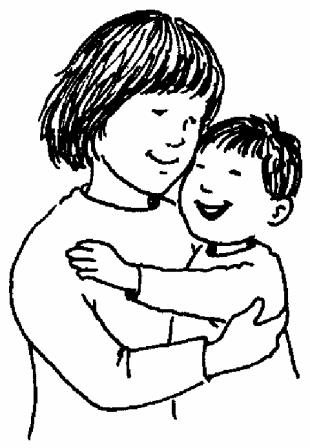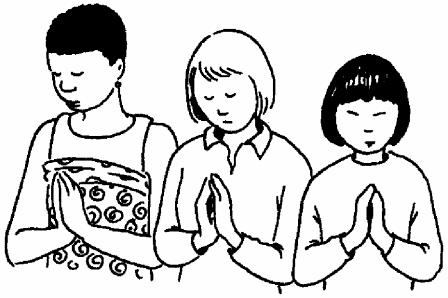


Saint Patrick
If there were a poll of popular saints it's almost certain that Patrick would be in the top three or four along with Valentine, Nicholas and Francis. His story is well known: born of Roman parents in Scotland (probably Kilpatrick near Dumbarton) around 373, he was captured as a slave and taken to a largely pagan Ireland. He escaped back to Britain, became a pupil of St Germanus, was ordained bishop and returned in 433 to evangelise the chieftains and their families in Ireland, and subsequently teach and preach to the general population. He died around 465. Among his many prayers is this favourite one:
Bouquets and Flowers For Every Event...

This information is intended for parents of school-age children and teachers who are imparting Religious Education within a Catholic school environment.
PASTORAL NOTES FOR MARCH
The contents of these documents are related to the present day teaching of the Catholic Church in relation to Doctrine, Liturgy and Catholic practices. There are also special sections on Catholic Marriage and arranging a funeral in the Catholic Church.
Because people returned to the bosom of their families on this day they brought gifts (daffodils, cakes etc) for their parents and the day became know as Mothering Sunday. Those who left their normal place of residence to do this were said to have "gone a-mothering". Inventive mothers prepared for their children's return and beat the Lenten fasting and abstinence rules by baking a cake made out of almonds that was known as the Simnel Cake. Some people called it "Refreshment Sunday".
Although Christians celebrate this mid-Lent Sunday under the name of "Laetare Sunday" (Rejoicing Sunday), it has been more commonly known since the middle of the eighteenth century as Mother's Day, a secular feast begun in America which has now become the commercial event that we all know and love (?) so well.

Dates To Remember
5th March
St. John of the Cross
10th March
St. John Ogilvie
11th March
Alexander Fleming, who discovered penicillin
died 1955
17th March
St. Patrick
19th March
St. Joseph
MOTHERING SUNDAY
When John Ogilvie was canonised in 1976 he became Scotland's first official saint since 1250. Born in 1579 and raised as a Calvinist in a mixed Catholic/ Presbyterian family, he became a Catholic after studying in Europe. He was ordained a Jesuit priest and returned to work as such in Scotland during penal times. Betrayed, he was tried and executed.
John came of age when neither Catholics nor Protestants were willing to tolerate one another. Turning to Scripture, he found words that enlarged his vision. Although he became a Catholic and died for his faith, he understood the meaning of "small-c catholic," the wide range of believers who embrace Christianity. We may be sure that his breadth of vision allows him now to rejoice in the ecumenical spirit fostered by the Second Vatican Council and to join all Christians in their prayer for unity among believers.
- Christ be with me, Christ before me,
- Christ behind me, Christ in me,
- Christ beneath me, Christ above me,
- Christ on my right, Christ on my left,
- Christ when I lie down, Christ when I sit down.
- Christ be in the heart of every person who thinks of me,
- Christ in the mouth of everyone who speaks of me,
- Christ in the eye that sees me,
- Christ in the ear that hears me.
Chronology of St. Patrick
373 Born on the banks of the River Clyde, Scotland
389 Taken captive and sold into slavery in Ireland
395 Converted to Christianity, escapes slavery, returns home.
405 Returns to Ireland, with Latin Bible, begins evangelisation.
430 Great success, ends human sacrifice, builds churches and schools.
465 Dies in Ireland
Joseph (March 19th)
We honour Joseph as the husband of Mary. Amid all the confusion and turmoil of their early life together, Joseph showed complete devotion to his wife and child, thus gaining himself the title of "the just man". He was faithful and trusting of God's plan even when he didn't understand its reasons or consequences and he acts as a model of faith to us.In Christian tradition Joseph has been seen as the patron saint of fathers and guardians, of workers and of the dying.
Blessed Joseph, husband of Mary, be with us this day.
You protected and cherished the Virgin;
loving the Child Jesus as your Son,
you rescued Him from the danger of death.
Defend the Church, the household of God,
purchased by the blood of Christ.
Guardian of the Holy Family,
be with us in our trials.
May your prayers obtain for us
the strength to flee from error
and wrestle with the powers of corruption
so that in life we may grow in holiness
and in death rejoice in the crown of victory.
Amen.
.

Catechumens
A catechumen is an adult who has never been baptised but who is now seeking to join the Church. In our parishes we have programmes of preparation that introduce these men and women into the mysteries of the Christian faith. The traditional time for receiving these people into the Church is at Easter, during the Easter Vigil. At various times during the year there are stages which catechumens pass through, some of which are celebrated publicly in Church. During Lent they undergo "scrutinies" (liturgical ceremonies of preparation) and we are asked to pray for them and their communities that they may be enlightened in their faith and may be welcomed into parishes after their baptism. Let's pray that more and more people may be drawn to Christ, that our faith may attract others and our parishes may be enriched by the gifts and graces which these new Christians bring to our Church communities.
What's in a name?
Our English word for Easter originally had nothing to do with the Christian feast. At this time of the year there were various pagan rituals that took place to honour the gods and goddesses. Eostre was a goddess of fertility and sunrise whose feast was celebrated as a Spring Festival. For a variety of reasons Christians chose to "christianise" this feast by celebrating the death and resurrection of Christ around the time of this festival.
A similar word (Ostern) is used by German speaking people, but other countries use a different concept for the feast. The French (Paques), Italian (Pasqua) and Spanish (Pascua) words all hint at another aspect: Passover. They get their word from the Hebrew (Pesach) which relates to the deliverance of the Hebrew people from slavery and their celebration of that event in Passover week. Christians speak of Christ as their Passover Lamb and see Easter as the time of deliverance from sin and death as well as the gift of life.
What about Easter Eggs and Bunnies?
Eggs have both a practical and symbolic connection with Easter. On the practical level there was an abundance of eggs at the end of Lent due to the fasting that people had undergone for forty days. Chickens continued to lay eggs oblivious of their owners' religious beliefs! So by Easter there were plenty of eggs to be had. But on a deeper level the symbolism of eggs is one of rebirth and new life. The rebirth notion is still found in our contemporary question, Which came first, the chicken or the egg? Although we tend to think of chocolate when we think of Easter eggs, there are some countries that have a tradition of using real eggs that are painted with religious emblems. In Poland these are taken to church at Easter to be blessed and then given as gifts. The original Faberge egg was made for his wife at Easter.
The bunnies are a corruption of hares which were a symbol of the goddess Easter. They are said to be all seeing since they are born with their eyes open. (By contrast, rabbits are born blind!)
Easter Bonnets
Although it's natural for us to have a change of clothing when Spring comes round, taking off the heavy stuff of winter and moving into something a little lighter, there is also another "fashion" element to Easter. In the early Church each Christian theoretically had a garment that showed he or she was a believer, although it was rarely worn. When a person was baptised and came out of the water they were clothed in a long white garment (think of the Christening shawl). Becoming Christians at Easter, they wore this garment for a week and then took it off the following Sunday. We call this Sunday Low Sunday because it's the Sunday on which the white garments were lowered (Dominica in albis deponendis/depositis). After that the new Christians wore their normal clothes again.

For More Information Contact : tjc.chambers@gmail.com